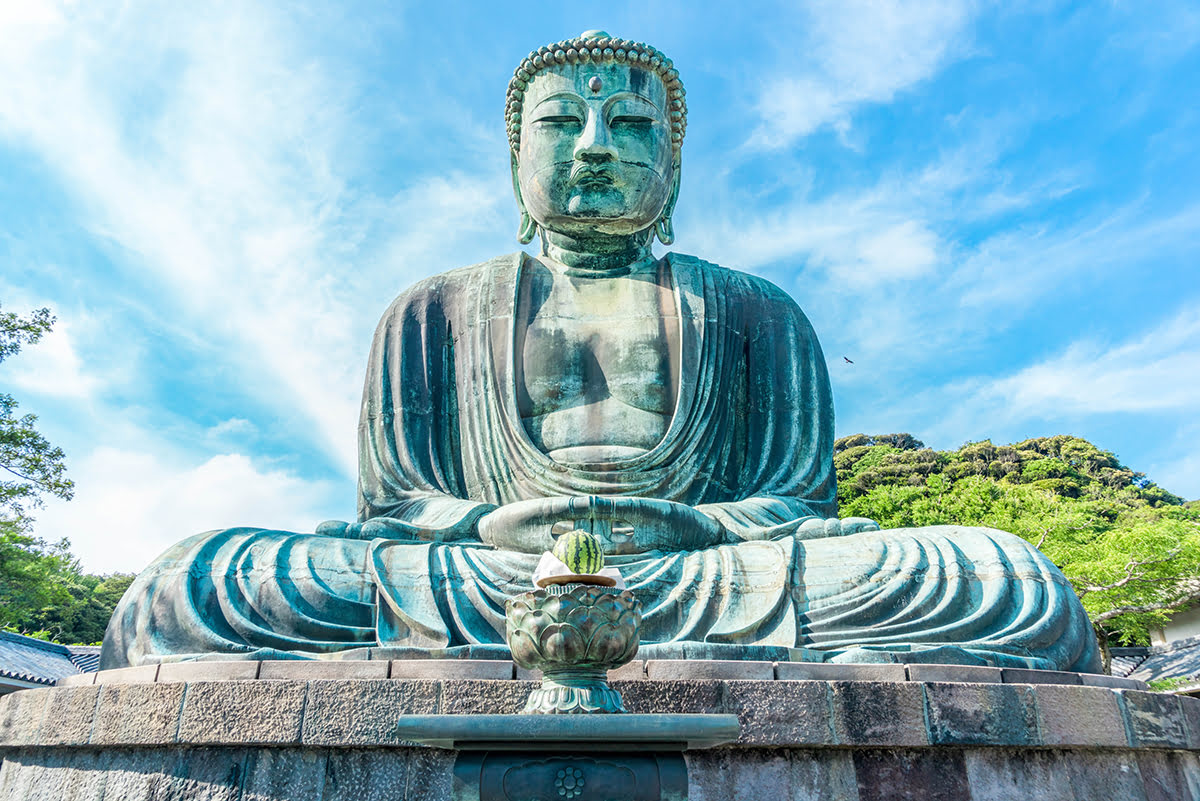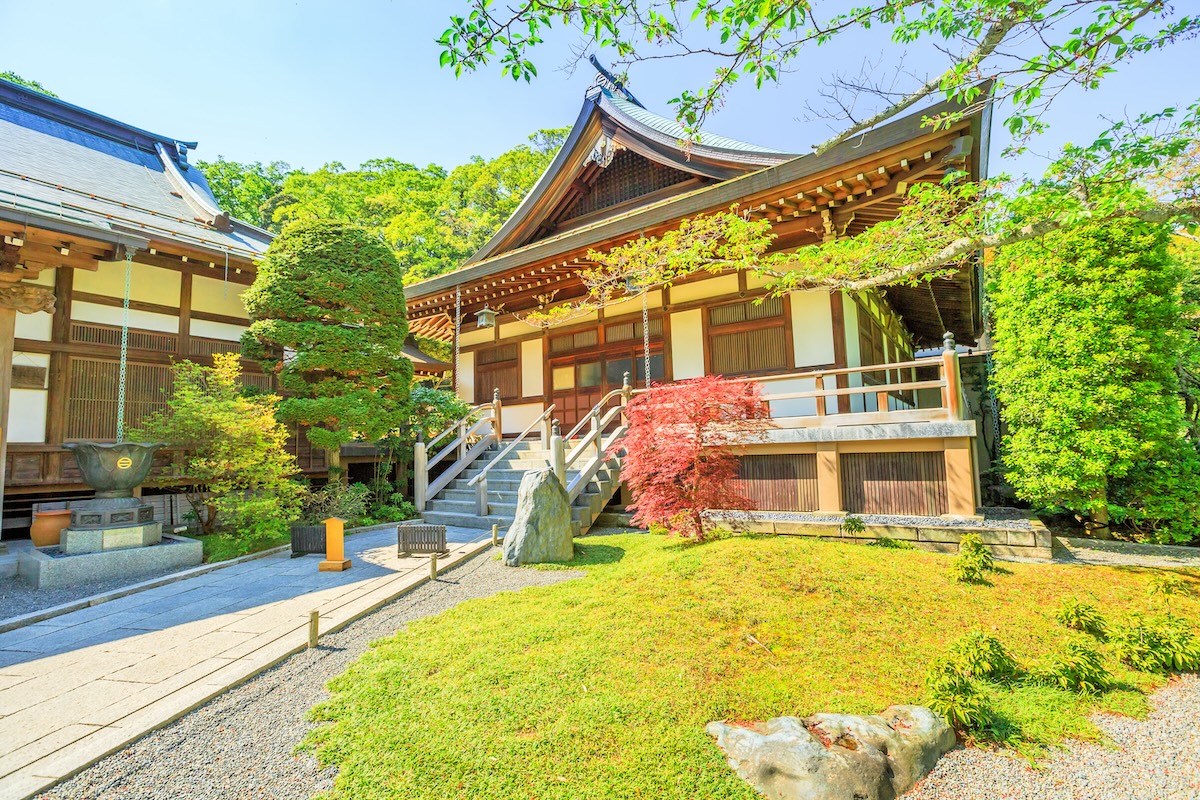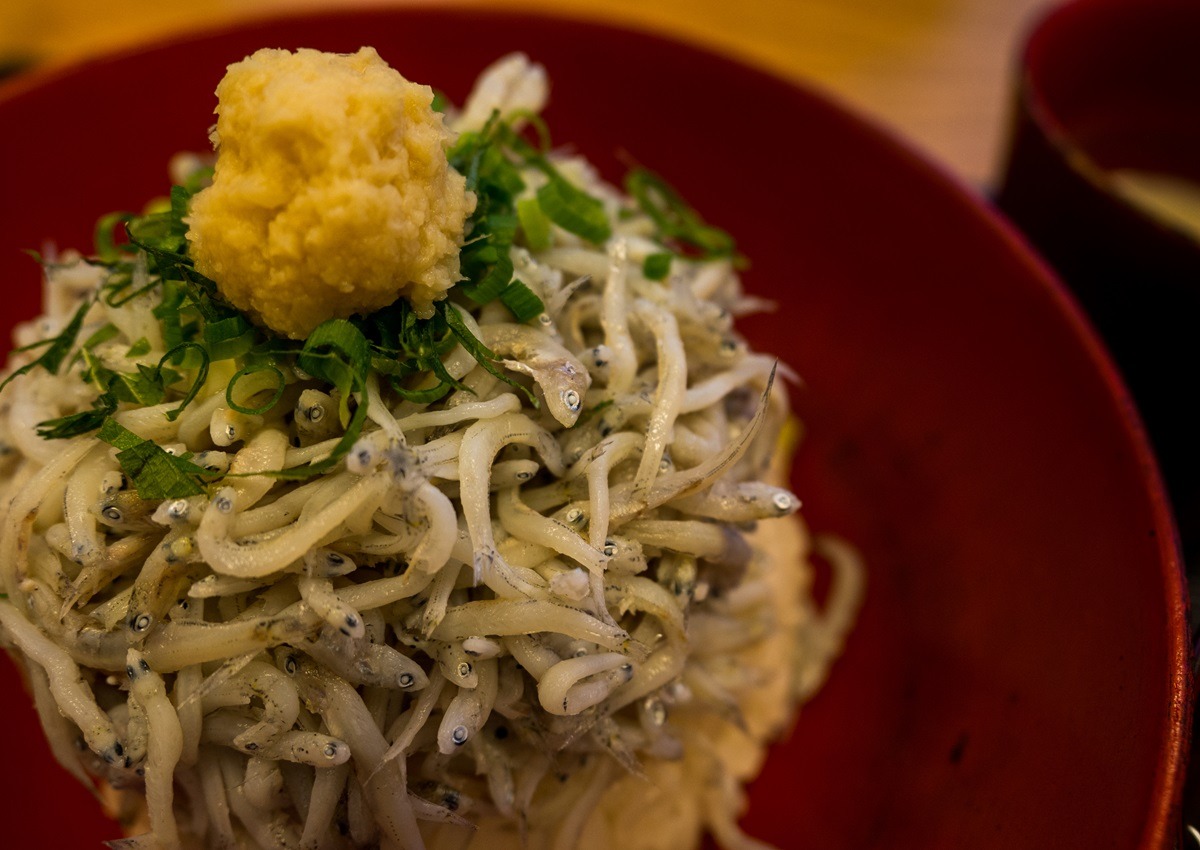Welcome to Kamakura, a picturesque coastal town just an hour south of Tokyo. Famous for its massive bronze Great Buddha, Kamakura is a treasure trove of historical and cultural attractions. Whether you’re interested in visiting ancient temples, strolling through serene bamboo forests, or enjoying a day at the beach, Kamakura has it all. This guide will take you through the best attractions and hidden gems to make the most of your trip to Kamakura.
The Great Buddha of Kamakura (Kamakura Daibutsu)
No visit to Kamakura is complete without seeing the iconic Great Buddha (Daibutsu). Located at Kotoku-in Temple, this massive bronze statue stands at over 13 meters tall and weighs around 93 tons. Originally constructed in 1252, the Great Buddha is one of Japan’s most famous and photographed landmarks.
The statue sits serenely in the open air, having survived natural disasters that destroyed the temple hall that once housed it. For a small fee, visitors can even enter the interior of the statue to see how it was constructed.
Hasedera Temple
Hasedera Temple, also known as the Hase Kannon Temple, is another must-visit site in Kamakura. Famous for its eleven-headed statue of Kannon, the goddess of mercy, the temple complex offers beautiful gardens, a lovely pond, and stunning views of the coastal city.
Don’t miss the Benten-kutsu Cave, which contains numerous carved statues along the walls. The temple grounds are especially beautiful during the hydrangea season in June and early July when the paths are lined with blooming flowers.
Kencho-ji Temple
Kencho-ji Temple is the oldest Zen temple in Kamakura, founded in 1253. The temple complex boasts several impressive buildings, beautiful gardens, and a serene atmosphere ideal for meditation and reflection.
A highlight of Kencho-ji is the ancient juniper tree, said to be over 700 years old. Visitors can also hike the trail behind the temple to Hansobo Shrine and enjoy panoramic views of Kamakura and the surrounding area.
Tsurugaoka Hachimangu Shrine
Tsurugaoka Hachimangu is Kamakura’s most important Shinto shrine, founded in 1063 by Minamoto Yoriyoshi. Located at the heart of the city, the shrine is dedicated to Hachiman, the patron of the Minamoto family and the samurai in general.
The shrine complex includes ponds, bridges, and many paths leading through lush gardens. It’s also the site of various festivals and traditional ceremonies throughout the year, including the famous Yabusame (archery on horseback) event.
Zeniarai Benten Shrine
Zeniarai Benten Shrine is one of Kamakura’s most unique and intriguing sites. According to legend, money washed in the shrine’s spring will double. Visitors can purchase a small basket to wash their coins and bills in the sacred spring, following a tradition that dates back centuries.
The shrine is located in a cave-like setting, adding to its mystical atmosphere. The surrounding area is tranquil, offering a peaceful retreat from the more crowded tourist spots.
Engaku-ji Temple
Engaku-ji Temple is one of Kamakura’s five great Zen temples. Founded in 1282, the temple was built to honor those who died defending Japan from the Mongol invasions. The temple complex includes several impressive buildings, serene gardens, and tea houses.
Engaku-ji is especially beautiful in the autumn when the foliage adds a burst of color to the tranquil setting. The temple also houses a large wooden Buddha statue and a relic of the Buddha’s tooth.
Hokoku-ji Temple
Known as the “Bamboo Temple,” Hokoku-ji offers a serene atmosphere with its beautiful bamboo forest. The temple was founded in 1334 and is renowned for its tea house, where visitors can enjoy a cup of matcha while taking in the stunning bamboo scenery.
The lush, green bamboo grove provides a perfect backdrop for a peaceful stroll, making it a favorite spot for photographers and nature lovers alike.
Culinary Delights in Kamakura
Kamakura is not only rich in history and culture, but it also offers a variety of culinary delights. From traditional Japanese sweets to fresh seafood, there’s something to satisfy every palate. Don’t miss trying Kamakura’s shirasu (whitebait), a local delicacy often served over rice or in savory dishes.
The Komachi-dori Street is a popular destination for food lovers, with numerous vendors offering street food, snacks, and souvenirs. Whether you’re in the mood for a quick bite or a sit-down meal, Kamakura’s diverse food scene will not disappoint.
How to Get to Kamakura
Getting to Kamakura is quite convenient, especially from Tokyo. The JR Yokosuka Line offers a direct route from Tokyo Station to Kamakura Station, taking approximately one hour. Alternatively, you can take the JR Shonan Shinjuku Line from Shinjuku Station.
Once you arrive, getting around Kamakura is easy with its well-connected public transportation system, including buses and the charming Enoden Line, which connects Kamakura with the coastal town of Enoshima.
Practical Tips for Visiting Kamakura
Kamakura is a walkable city, but wearing comfortable shoes is essential, especially if you plan to explore its hiking trails. Carrying a map or downloading a navigation app can be helpful, as some attractions can be tucked away in less-traveled areas.
Spring and autumn are the best times to visit Kamakura, as the weather is mild and the natural scenery is at its most beautiful. Keep in mind that weekends and holidays can be quite crowded, so visiting on a weekday may provide a more peaceful experience.
Whether you’re a history buff, nature lover, or foodie, Kamakura has something to offer every traveler. With its rich cultural heritage, stunning landscapes, and delicious cuisine, a trip to Kamakura is sure to be a memorable experience. Happy travels!

























